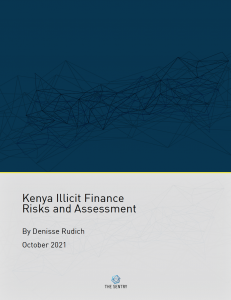 Read the full report
Read the full report
Kenya is a country that is rich in natural resources, has strong manufacturing and services sectors, and acts as a strategic gateway between East and Central Africa and Europe, the Middle East, and Asia. While this position offers great opportunity, it also makes Kenya highly susceptible to acting as a transshipment point for illicit trade and finance, meaning that it is essential for Kenya to have effective and adequate anti-money laundering and countering the financing of terrorism (AML/CFT) measures in place. It is estimated that Kenya has lost more than $10.6 billion in illicit financial flows since 1970, including via capital flight to banking secrecy havens of funds illegally acquired by officials, individuals, and corporations.* The US government recently listed Kenya as a “major money laundering jurisdiction,” citing numerous domestic and foreign criminal activities and highlighting that money laundering takes place in both the formal and informal sectors.*
In the near future, Kenya is likely to undergo its Eastern and Southern Africa Anti-Money Laundering Group (ESAAMLG) mutual evaluation review (MER) and finalize a national risk assessment (NRA). Kenya’s AML/CFT system is more advanced than others in the region. After having been through a MER in 2010, Kenya updated its AML/CFT framework, leading to its removal from the Financial Action Task Force’s (FATF) list of non-cooperative countries and territories (NCCTs) in just four years. The country is in the process of preparing for its next MER and has already tabled proposed updates to national AML/CFT laws and regulations.* However, major risks remain.
Since 2016, The Sentry has, through its investigative work in South Sudan and East and Central Africa, exposed a number of illicit financial activities in Kenya connected to regional corruption and conflict. The Sentry has historically emphasized the important role of the Kenyan financial system as a regional hub for South Sudanese elites to bank and purchase property, stating, “It’s vital that Kenyan banks and their regulators lead the way in implementing strict standards for anti-money laundering, anticorruption, and sanctions enforcement to protect the country’s financial system from abuse by the violent kleptocrats and corrupt elite in South Sudan who pump their ill-gotten gains into Kenyan bank accounts and real estate holdings.”* Kenyan authorities are beginning to take action against foreign corruption, as evidenced by a recent asset-freezing action against a United States (US)-sanctioned South Sudanese official, although his account has subsequently been unfrozen.* *
This report was compiled using open-source research and is set out in three sections. It focuses on areas that the ESAAMLG assessment team should consider during its preparation for the onsite visit, as well as areas that the government of Kenya may wish to assess as it finalizes its NRA and prepares for the MER. The first part of the report discusses illicit finance risks and typologies—many linked to South Sudan—to be considered and addressed as the government seeks to establish Kenya as a financial hub in Africa through its Vision 2030 and the development of the Nairobi International Financial Centre (NIFC). The second part of the report provides a high-level assessment of Kenya’s AML/CFT regime, informed by the FATF’s 40 Recommendations. The third section provides recommendations to the MER team, the government of Kenya, and international partners, including an overview of steps that Kenya should prioritize to protect the banking sector, the real estate sector, and other areas at risk of abuse by illicit actors.
Key Findings
- Weaknesses in Kenya’s finance and real estate sectors have been exploited to contribute to South Sudan’s conflict. South Sudanese politically exposed persons (PEPs) responsible for the conflict have infiltrated Kenyan banking, real estate, trade, defense, and corporate enterprises with their ill-gotten gains. Kenya is a destination country for illicit South Sudanese funds, which have been moved into Kenya using Kenyan corporate structures, luxury properties, and banks. Arms and munitions have also transited through Kenya into South Sudan.
- Kenya faces severe money laundering risks. Kenya faces numerous illicit finance risks that expose its society to crime and deprive it of public services. These risks include domestic corruption, terrorist financing, environmental crimes, illegal trafficking, tax evasion, and the misuse of digital finance such as mobile banking and cryptocurrency. If Kenya has the political will, it has the ability to respond to existing threats, but tech-enabled and cyber risks require additional training and technology resources for an effective response.
- Kenya’s AML/CFT framework requires improvement. While Kenya has reasonably documented AML/CFT laws and regulations, gaps remain around full documentation into law and effective implementation by both the public and private sectors. Areas identified that require enhancement include the risk-based approach; proliferation financing; sanctions adherence; financial secrecy; resourcing available for AML/CFT compliance; PEPs; wire transfers and new technology; designated non-financial businesses and professionals (DNFBPs), particularly notaries and legal practitioners; public beneficial ownership registries; transparency on the roles and responsibilities of competent authorities; and domestic barriers to international cooperation.
- Kenya’s AML/CFT efforts are more effective when linked to countering domestic corruption. Effective implementation remains a challenge in several areas, and AML/CFT action by government and regulators seems to be more robust when linked to the domestic war on graft. This makes Kenya an attractive destination for corrupt foreign officials and their enablers to launder illicit financial flows from across Kenya’s borders.
Read the full report and recommendations >

